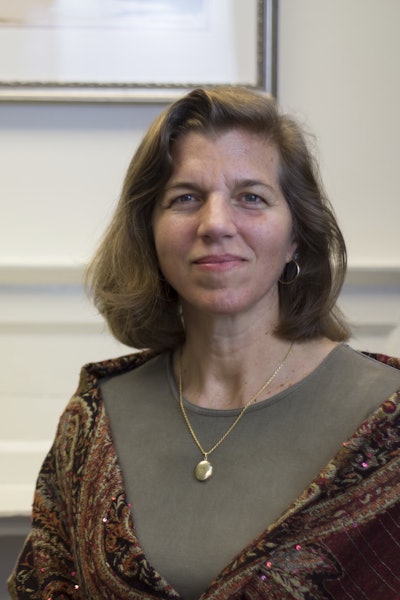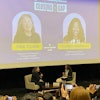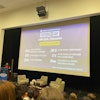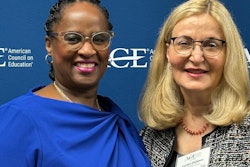The COVID-19 pandemic is still shaking up higher education as budgets remain tightened and programs continue online. But in the midst of all this, women’s studies scholars across the country are finding ways to celebrate Women’s History Month and emphasize the importance of their research to today’s most critical national conversations.
 Dr. Allison Pugh
Dr. Allison PughWomen’s studies scholars worry programs like theirs will take a hit as the pandemic leads to adjunct faculty and staff layoffs, pay cuts, furloughs and slashed programs across higher education.
A data brief from The National Association of Women’s Studies details the many changes that have already confronted women and gender studies programs across the country. For example, the Women & Gender Center at Oregon State University is reducing programming as it anticipates a 10-15% budget cut in response to declining student enrollment. Purdue University merged women’s, gender, and sexuality studies into a division with seven programs under one director.
But concerns about the longevity of women’s studies programs aren’t new, says Dr. Juanita Johnson-Bailey, director of the Institute for Women’s Studies at the University of Georgia. She’s confident these programs will continue to prove their value to campus communities.
The Institute for Women’s Studies has been around for 44 years and financial support for the institute seems relatively secure; however, when it comes to women’s studies in general, “we’ve always had to sing for our supper,” says Johnson-Bailey. “So many people question the legitimacy of programs like ours, and this is something that has been ongoing, that we always have to justify our existence.”
“Although we have been faced with budget cuts, we’ve always been able to stand our ground and defend our existence because of how much we have done and how much we contribute to the university community,” she added.
Dr. Allison Pugh, a sociology professor and chair of the women, gender and sexuality department at the University of Virginia, says women’s studies programs are giving campus communities the tools they need to understand what’s going on “outside my window right now.”
“We drag the university into the 21st century,” she says. “Administrations point to us when they want to highlight their commitments to equity or justice or inclusion. But it’s not just as a symbol. We provide the intellectual decoder rings for the enormous cohorts of students who are driven to understand current events.”
For example, applying a women’s studies lens to looking at the pandemic uncovers a host of issues, like the burden on working mothers and queer youth who might be trapped in non-affirming environments at home.
 Dr. Juanita Johnson-Bailey
Dr. Juanita Johnson-BaileyShe praises the “interdisciplinarity” of the women’s studies field and its practice of uplifting marginalized voices.
“There are all these angles of vision that [women and gender studies] lets us have on how these kind of massive social forces are affecting people in very different ways,” she says.
The field explores “the sheer complexity of the different perspectives and experiences that people bring and the primacy of thinking of the people who are being excluded or who are suffering under a particular policy or experience.”
Universities especially need that lens right now to follow through on their promises to support diversity in light of Black Lives Matter protests this past summer, says Dr. Kimberly Hamlin, associate professor of history and global and intercultural studies and an affiliate of the women’s, gender, and sexuality program at Miami University.
“So many universities are making the decision to cut programs — like women’s studies, like African American studies — at the exact same time [as] they’re making public proclamations about their commitment to diversity, equity and inclusion,” she says. “And you just can’t do that. It’s not just about the goals we profess. It’s about what we teach.”
Assessing impact
University leaders might look to women’s studies programs as a place to trim costs because they have fewer majors than a field like business, she added, but students often report these classes as the ones that have “the most transformative impact.” In other words, the number of majors is the “wrong measure,” she says.
That said, at some universities, women’s studies appears to be actually growing, even in these leaner times for higher education budgets. At the University of Georgia, the Institute for Women’s Studies has seen an uptick in students, and Terri L. Hatfield, the institute’s program coordinator, attributes it to the field’s long history of tackling racial disparities and other issues that matter to students.
“While maybe the rest of the nation is having some of these conversations for the first time in their disciplines and in their households, we recognize that feminist lens is vital to these conversations because we’ve been having them for decades,” Hatfield says.
Pugh’s department is also expanding. Often, women’s studies programs rely heavily on joint appointments, which can feel like it gives them “second-class” status and leaves faculty overburdened. The department now has three non-joint appointments and recently got a line of funding to hire a Black feminist theorist. The department is also growing its undergraduate course offerings and has a new graduate course opening in the spring.
“It feels like a positive moment right now,” Pugh says.
For Elzbeth Islas, director of the Women’s Resource Center at San Diego State University, Women’s History Month is an opportune time to shine a light on the ongoing legacy of women’s studies research.
The center plans to release a calendar of about 20 virtual events, including keynote speakers and film screenings.
“It’s really a chance to uplift visibility of really important gender justice research and highlight the different experiences that can co-exist within the identity of womanhood and gender and to really not just honor the history of the women’s community but look at things like feminist futures or intersectional gender justice futures,” she says. “I find Women’s History Month to be a really exciting chance to bring all of this to the forefront.”
She also hopes it’ll be a time for “healing collectively and interdependently.”
Celebrating amid a pandemic
The University of Georgia will also be having a continuous celebration of virtual events, with speakers and films focused on feminist activism for voting rights.
“We were determined that the pandemic would not deter us from having a full, month-long celebration,” says Johnson-Bailey.
Women’s History Month can be a powerful reminder, but it can’t be a substitute for meaningful investment in women’s studies education the other 11 months of the year, says Hamlin. For example, as a historian, she finds K-12 textbooks still too often relegate women’s history to the margins.
“Despite the decades of pioneering research by women’s studies scholars, by historians of women … state standards and textbooks have not really changed to reflect this scholarship and we’re still stuck in like a women-get-a-sidebar textbook world,” she says. “The narratives we tell about ourselves and our country still center great things great men did with women as a little add-on.”
“Every month should be women’s history month.”
Pugh agreed that the “symbol” of the month has value, but it needs to be the start of a more expansive conversation.
“I’m wondering when we’re going to have a queer history month or Black and Brown women’s history month,” she says. “There are not enough months in the year to highlight those who need their history retold.”
Going forward, Johnson-Bailey wants to continue giving students a diverse women’s studies education — and the feeling that she had when she went to her first women’s studies class at the University of Georgia, that “this is home. This is my heart. This is where I want all of my scholarship to be.”
This article originally appeared in the March 4, 2021 edition of Diverse. Read it here.



















